#ww2 planes
Explore tagged Tumblr posts
Text

• Fokker D.XXI Fighter
The Fokker D.XXI fighter was designed in 1935 by Dutch aircraft manufacturer Fokker in response to requirements laid out by the Royal Netherlands East Indies Army Air Force (Militaire Luchtvaart van het Koninklijk Nederlands-Indisch Leger, ML-KNIL). The D.XXI was designed as an inexpensive, rugged, and compact fighter aircraft that would possess respectable performance for its era.
On November 14th, 1934, design proposals for a new fighter aircraft were submitted by Fokker to the Luchtvaartafdeling (Dutch Army Aviation Group). Fokker's design team, led by Erich Schatzki, and based at the firm's newly completed plant in the southern district of Amsterdam, had sought to incorporate and combine various new concepts and recent features from successful fighter aircraft, including the previous C.X and D.XVII aircraft. The proposed aircraft was a low-wing monoplane which adopted an entirely enclosed cockpit; initial design work had been conducted in cooperation with British engine manufacturer Rolls-Royce, and it had been originally envisaged that the type would be powered by a Rolls-Royce Kestrel IV. Projections of the aircraft's performance included a maximum speed of 420 km/h at an altitude of 4,350 meters, a range of 888 km, and an altitude ceiling of 10,000 meters. The planned armament included rifle-calibre machine guns or 20mm cannons, which were to be embedded into the wings and fuselage.
In early 1935, the Luchtvaartafdeling signed a contract for a single prototype of the proposed fighter to be constructed for an evaluation to be performed by the Royal Netherlands East Indies Army. This prototype, designated FD-322, which was powered by a single Bristol Mercury VI-S radial engine which drove a three-blade, two-pitch propeller, performed its maiden flight at Welschap Airfield, Eindhoven, on March 27th, 1936. According to aviation author G.H. Kamphuis, the prospects for series production of the new fighter looked doubtful shortly after the first flight was performed due to a high level change in Dutch defence policy; Minister for Foreign Affairs Hendrik Colijn informed the Ministry of War that, in response to the changing international situation, a higher priority would be placed on building up a substantial bomber capability over new fighter aircraft. In addition to the Luchtvaartafdeling's interest in a trainer aircraft, the service had also attached great importance to the concept of a heavily armed 'cruiser' aircraft capable of performing multiple mission types. Further doubts and confusion were added by the emergence of a competing aircraft proposal in the form of the Koolhoven F.K.58, which had also been designed by Ir. Schatzki. It was decided that the D.XXI and F.K.58 should participate in a series of comparative tests against one another, leading to the D.XXI prototype being dispatched to Soesterberg Air Base, Utrecht, in November 1936. However, head-to-head testing between the two types was delayed by the F.K.58, which did not perform its first flight until September 1938.
During 1937, the Dutch government gave funding and its approval for a limited expansion of the Army Aviation Group, which resulted in an order being placed for 36 Fokker D.XXI fighters, to be powered by the 830 h.p. Bristol Mercury VII or VIII engines. According to Kamphuis, Dutch interest in the D.XXI had been revived, in part, due to an examination of the first aircraft by an evaluation board, which itself had been conducted due to interest expressed by the Finnish Air Force, which itself would result in export sales being made to Finland. On July 20th, 1938, the first Luchtvaartafdeling D.XXI conducted its first flight, after which it participated in test flights prior to deliver to Soesterberg. On September 8th, 1939, the final aircraft of the first batch of 36 was delivered. Even as the domestic demand for the D.XXI was being questioned, the type had attracted the attention of a number of foreign governments. In 1937, the Finnish government decided to place an order for an initial batch of seven aircraft, further negotiations were also conducted towards the acquisition of a manufacturing license, under which Finland proceeded to domestically produce further aircraft as well. Throughout 1940 and 1941, the Finnish State Aircraft Factory set about reconditioning the aircraft that had been used in the Winter War for continued service; an additional 50 D.XXIs were ordered in 1941, which were powered by the Pratt & Whitney R-1535 Twin Wasp Junior engine, acquired via Sweden. The Danish government ordered a pair of D.XXI fighters along with arrangements for its own manufacturing license. The Danish D.XXI fighters were powered by a 645 h.p. Bristol Mercury VI-S radial and carried a Madsen 20 mm cannon under each wing. Ten aircraft were completed by the Royal Army Aircraft Factory in Copenhagen prior to the German invasion of Denmark in April 1940. The Second Spanish Republic also acquired a manufacturing license for the D.XXI. Reportedly, a total of 50 fuselages were manufactured on the Spanish production line; however, the Spanish plant in which the fighter was being produced was overrun by Nationalist forces before any of the Spanish-built aircraft were completed.
The Fokker D.XXI was a low-wing monoplane fighter aircraft. Following standard Fokker design practice of the period, it featured a welded steel tube fuselage that was largely covered by fabric, including the flight control surfaces; element forward of the trailing edges of the wings were covered by detachable aluminum panels instead. The wings were of a wooden construction, being composed of two box spars attached to ribs made of plywood. The aircraft was outfitted with a fixed spatted undercarriage with cantilever legs; braking was provided by independently-operated pedals using compressed air. The cockpit of the D.XXI was fully enclosed by a plexiglas hood featuring large sliding sections, and was entirely jettisonable in an emergency situation to enable pilots to bail out. Pilots were protected against turnover injuries by means of a pylon built into the structure of the aircraft set behind the seat. Fuel was housed in a 350-litre (77 imp gal) tank located aft of the engine. The main armament consisted of two pairs of 7.92mm M36 FN-Browning machine guns, one pair housed within the wings, carrying 300 rounds of ammunition each, and the other pair within the forward fuselage and shooting through the propeller blades, carrying 500 rounds each. Upon its entry to service in 1938, the D.XXI represented a significant leap forward for the Dutch Army Aviation Group, whose fighter force had until that time consisted of aging biplanes with open cockpits. The new Fokker quickly proved to be an extremely sturdy aircraft, being capable of attaining a speed of 700 km/h in a dive.
The Fokker D.XXI was first used in combat by the Finnish Air Force during the 1939–1940 Winter War between the Soviet Union and Finland. Upon the war's outbreak, a total of 41 aircraft were in Finnish service, all powered by the Mercury VIII engine. On December 1st, 1939, the D.XXI achieved its first victory with the shooting down of a Soviet Tupolev SB. The Fokker was evenly matched against the aircraft of the Soviet Air Force, and its rugged design with a radial engine and fixed undercarriage made it well suited for Finnish conditions. As the Winter War continued and newer models of Soviet fighters appeared, the Fokker D.XXI proved to be increasingly underpowered and too lightly armed to compete; plans to arm the Fokkers with 20 mm cannons were dropped, and only one fighter was armed with two 20 mm cannons and two 7.92 mm/.312 in machine guns. The conflict between Finland and the Soviet Union was resumed in the Continuation War (1941–1944), the D.XXI was again a key element of the Finnish Air Force. During the first air battle, six Mercury-engined D.XXIs shot down a pair of Soviet Ilyushin DB-3 bombers. Several Finnish Air Force pilots became fighter aces with the Fokker D.XXI.
Although the order by the ML-KNIL was cancelled, the Luchtvaartafdeling (Dutch Army Air Force before World War II) placed an order of 36 aircraft, which were all delivered in time to participate in the war against the Germans in May 1940. On May 10th, 1940, the day that Germany launched its invasion of the Netherlands, 28 D.XXIs were serviceable and ready for operations. That first day, six D.XXIs escorted a formation of Fokker T.V bombers to attack the Meuse bridges to hinder the German advance; they were intercepted by nine German Messerschmitt Bf 109s, and during the ensuing dogfight, one Bf 109 was shot down and two more damaged for the loss of one D.XXI and two T.Vs. That same day, a flight of D.XXIs intercepted and shot down 37 out of 55 inbound Junkers Ju 52 transports which had crossed the border during the early morning. Due to many aircraft becoming unserviceable as a result of battle damage after the first day, it was decided to regroup at Buiksloot, north of Amsterdam, on May 11th. For the following four days, missions out of Buiksloot were flown by D.XXIs flying in both solo and small formations to escort friendly units as well as in the search-and-destroy role. Sorties against the numerically superior German forces continued until the middle of May 14th, at which point news of the Dutch capitulation reached Buiksloot, upon which both the remaining aircraft and the airstrip were destroyed to prevent their use by the Germans. Out of the original force of 28 D.XXI aircraft, eight fighters had remained airworthy. The D.XXI, although much slower and more lightly armed than the Bf 109, performed surprisingly well in combat due to its manoeuvrability. It was also one of the few aircraft that could follow a Stuka bomber into its dive. Nonetheless, the numerical superiority of the Luftwaffe led to the destruction of most Luchtvaartafdeling D.XXI fighters during the campaign. The LVA (Netherlands Air Force) scored a total of 38 victories against the Luftwaffe during their struggle against the German juggernaut. 16 of those went to Fokker D.XXI pilots.
A Mercury-engine Finnish-built Fokker D.XXI, FR-110, is on display at the Finnish Air Force Museum, Jyväskylä, Finland. This is the highest scoring (10 victories) D.XXI airframe. It was the mount of Lt. Viktor Pyötsiä during the Winter War. In 2022, a flyable replica was completed at Hoogeveen Airport by veteran aircraft restorer Jack van Egmond. A number of original parts was used and the plane was built according to original Fokker build specifications as Jack van Egmond is in possession of 397 out of 416 Fokker blueprints.
#second world war#world war 2#world war ii#wwii#military history#aviation#military aircraft#dutch history#winter war#aircraft#ww2 planes#dutch#dutch air force
34 notes
·
View notes
Text

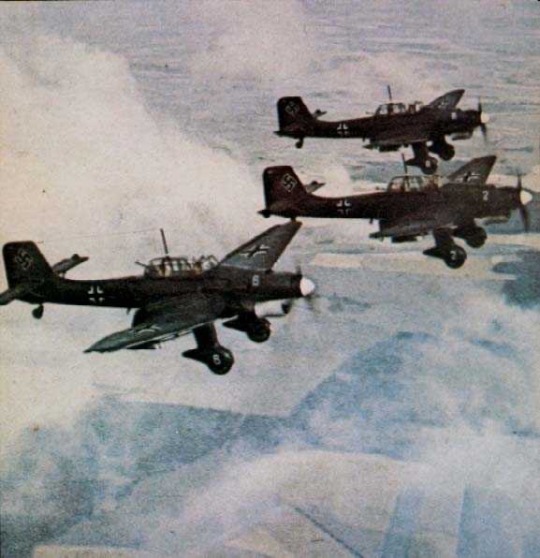
Wir sind die schwarzen Husaren der Luft,
Immer bereit, wenn der Einsatz uns ruft,
Wir stürzen vom Himmel und schlagen zu.
Wir fürchten die Hölle nicht und geben nicht Ruh,
Bis endlich der Feind am Boden liegt,
Bis England, bis England, bis England besiegt-
Die Stukas, die Stukas, die Stukas!
#stuka#reichblr#luftwaffe#aviation#wwii#wwii history#world war two#ww2#1940s#colorized#german history#world at war#history in pictures#worldwar2photos#ww2 germany#ww2 planes
90 notes
·
View notes
Text

My brother really likes planes, so when the family were making bunting, I had to draw a Spitfire! It's a running joke that each time I draw one it turns out slightly differently, and he affectionately dubs them 'Spit-Things' haha!
This plane is a Spitfire MK V, aircraft registration EE602, made in 1942 in Yeovil.
The letters either side of the RAF roundel, identify the Squadron and the particular aircraft. In this case, 'DV' marks it to be part of No. 129 (Mysore) Squadron, which was named after the Mysore region of India, due to the Indian Government raising large sums of money through War Bonds.
EE602 flew over 100 missions, including the Battle of Britain (with 66 Squadron) and escorting 'Memphis Belle' back to the English Coast!
I found the photo I used as reference online but unfortunately cannot find that particular one again.
Watercolour brush markers on cardstock.
#art#Pink Peril Art#illustration#artists on tumblr#traditional art#watercolour#History#WW2 History#WW2 planes#Spitfire#Battle of Britain#Aircraft#RAF
7 notes
·
View notes
Text
6

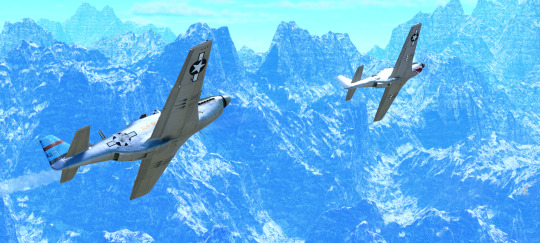
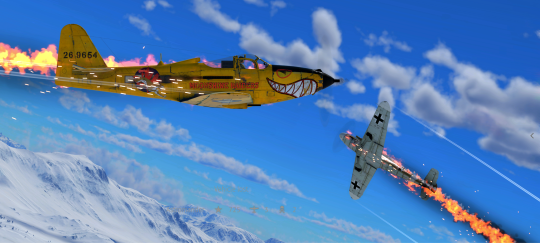

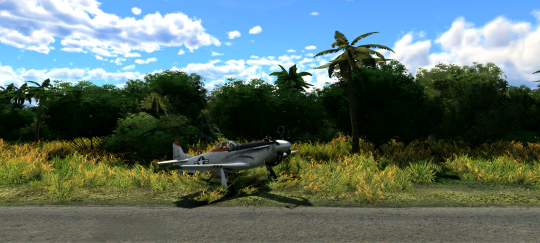
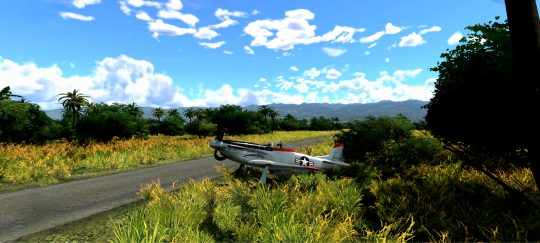

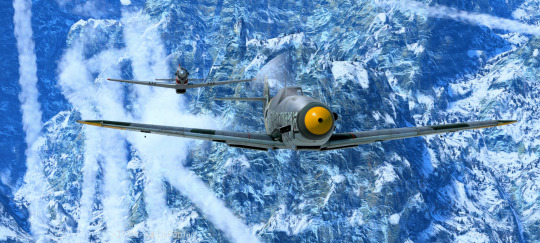
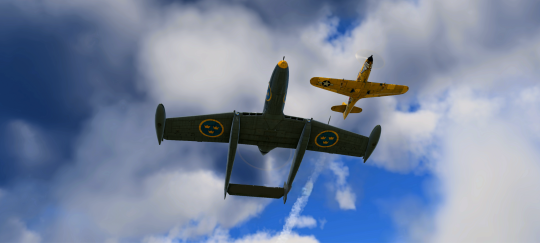
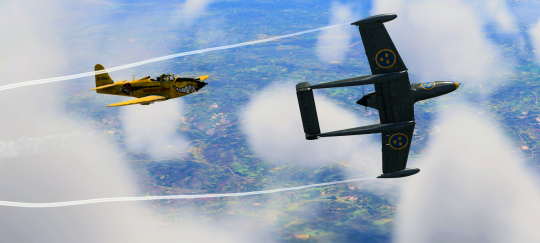
13 notes
·
View notes
Text

Sally B framed
Www.abbieshreevephotography.co.uk
Facebook abbieshreevephotography
Insta shreevesphotos
#facebook#lgbtqia#nikon#nikonphotography#photography#photooftheday#photoshop#beautiful#follow me#instagood#sallyb#b 17 flying fortress#b17#military planes#planes#plane photography#military#ww2#ww2 planes#ww2 history#bomber#original photographers#photographers on tumblr#female photographers#photo edit#framed art#lgbtq#follow#like#ptsd recovery
2 notes
·
View notes
Text

Пара истребителей Ла-7 времен Великой Отечественной Войны, я конечно как всегда не доволен тем, что у меня получилось, но уже похуй)
12 notes
·
View notes
Text
I was trying to explain the walrus and the fairy meme to my friend who does not use tumblr and this was her response:

Please picture that as a full size Supermarine Walrus aircraft and not a piddly one - I was attempting to edit and send this to the aforementioned friend before my train lost internet at Westminster. It’s far away, not small.
#I mean. I did the edit but she requested I do so in spirit of the meme#and because she found it hilarious to imagine#seth says#walrus and fairy#supermarine walrus aircraft#Supermarine walrus#ww2 planes#I’m not interested in planes but the way they launched these off ships is so cool to me#steam pigeon my beloved
2 notes
·
View notes
Text
Guys guys guys (gender neutral) it’s been a while but my heads full fledged Planes again and it’s so silly
#ww2 history#aviation#planes#ww2 planes#omg#I love planes#b 17 flying fortress#The Memphis Belle#i love it so much
2 notes
·
View notes
Text

I drew these planes a few days ago. The top one is a "me bf 109" and the other is a "supermairne spitfire". Sorry they are not fully accurate
12 notes
·
View notes
Text

"Graveyard In The Marshals" is an original acrylic painting of two WW2 Dauntless' in the airplane graveyard in the Marshall Islands. a 16x20, it is available! Dm me for details and the link, or to start a commission!
13 notes
·
View notes
Text
lmao so me and dad were talking and i said "aren't the lancaster and the B17 technically simmilar?"
They are, but funny thing is, the Lancaster, despite being about the same size as the B17 could carry about 5,400 kg(22,000 lbs) when pushed(it's normal payload was 14,000 lbs, or 6,350 kgs).
Here's the funny part: despite being practically the same size, the B17 can only carry 2,200 kg(4,800 lbs). This is because the B17 was weighed down with defensive armaments(think gun turrets etc). The Lanc could carry this much weight because it was built lighter(depending on if it was carrying a grand slam or not), and had a tail gunner(whose role had the highest fatality per dog fight) and a nose gunner(i dont know if there was any more defensive weponary on the Lanc but if there is plz tell me T-T). It was also the only plane modified to carry the grand slam earthquake bombs, which weighed 22,000 lbs - the maximum payload for the Lancaster. While both planes are good, i find my bias leaning more towards older British warplanes. This is mainly because British warplanes planes smaller - and lighter - then the B17 could carry more bombs than the B17 itself, for example, the mosqito. Am i doing this without factoring the range in? yes. I dont really think i really want to research all that right now
please dont come at me in the reblogs/tags
#ww2 planes#bomber class planes are overall the best type to me though#feeling tempted to post the model planes i have later#side eyes this post in a few months/years time#avro lancaster#b17 flying fortress#de havilland mosquito#ww2 planes are the best planes#change my mind#apart from the A10#that shits cool
3 notes
·
View notes
Text


math is boring, i messed up the handguard :(
1 note
·
View note
Text

These are super cool

BUT THESE THINGS ARE THE BOMB LITERALLY
0 notes
Text
5
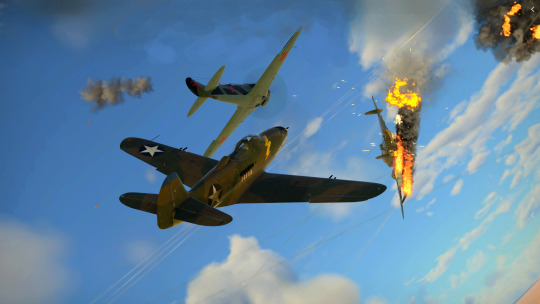


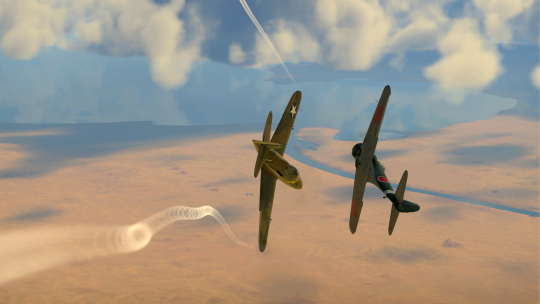
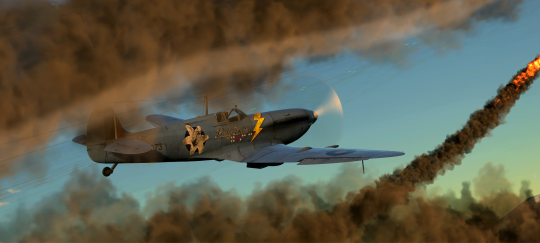
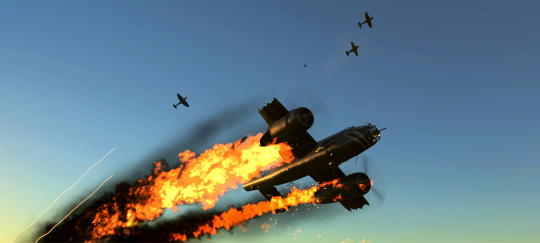
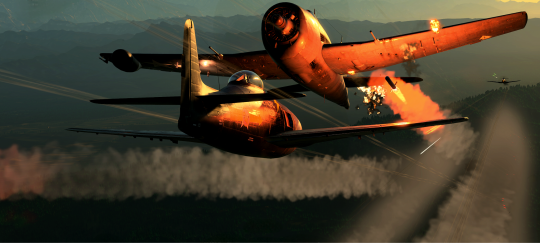
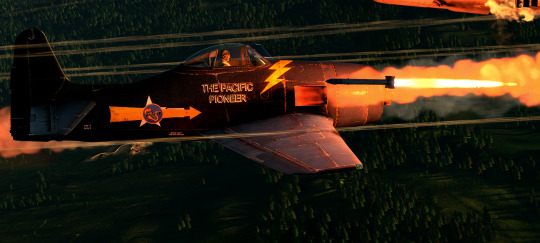


2 notes
·
View notes
Text
youtube
Two iconic Spitfires touch down on the runway — then, right after, a Boeing 747 powers up and takes off. There’s something surreal about seeing these aircraft, from different eras of History, crossing paths within minutes at this Airport.
A local plane enthusiast nearby also shared some quick info about the Spitfires, adding to the UK Travel experience.
#aviation#spitfire planes#747 takeoff#spitfire landing#ww2 planes#planes#airport#plane spotter#plane enthusiast#Youtube
0 notes
